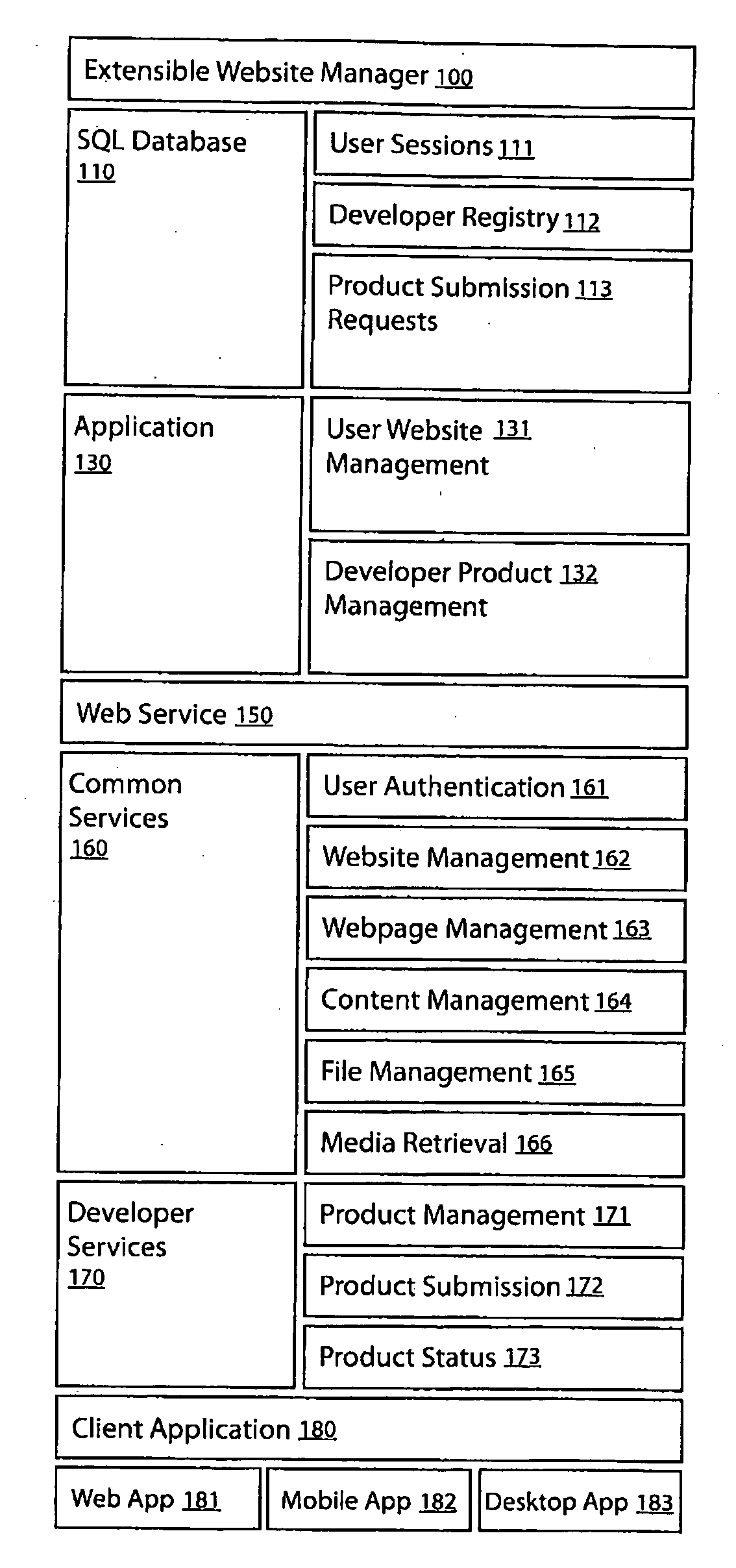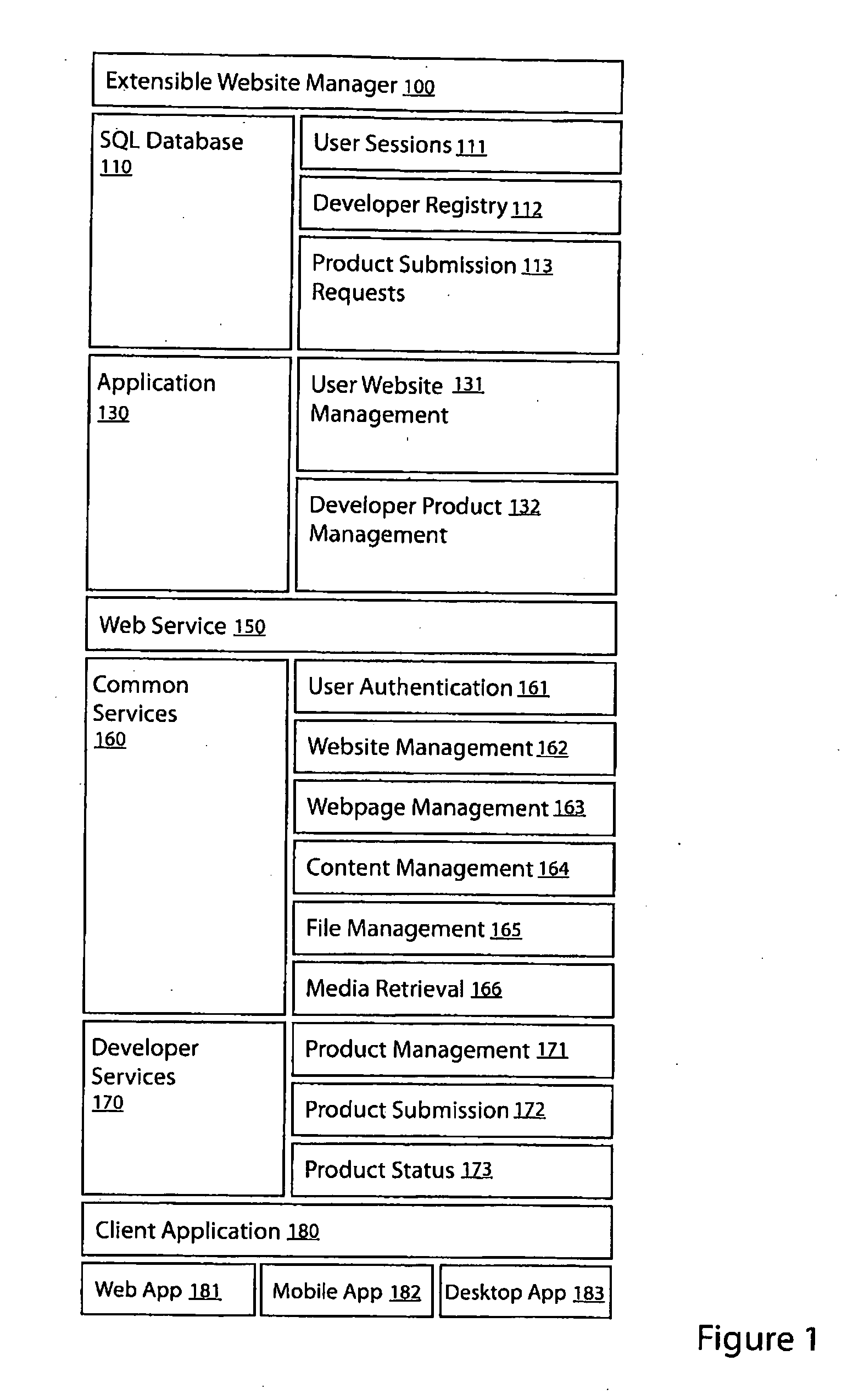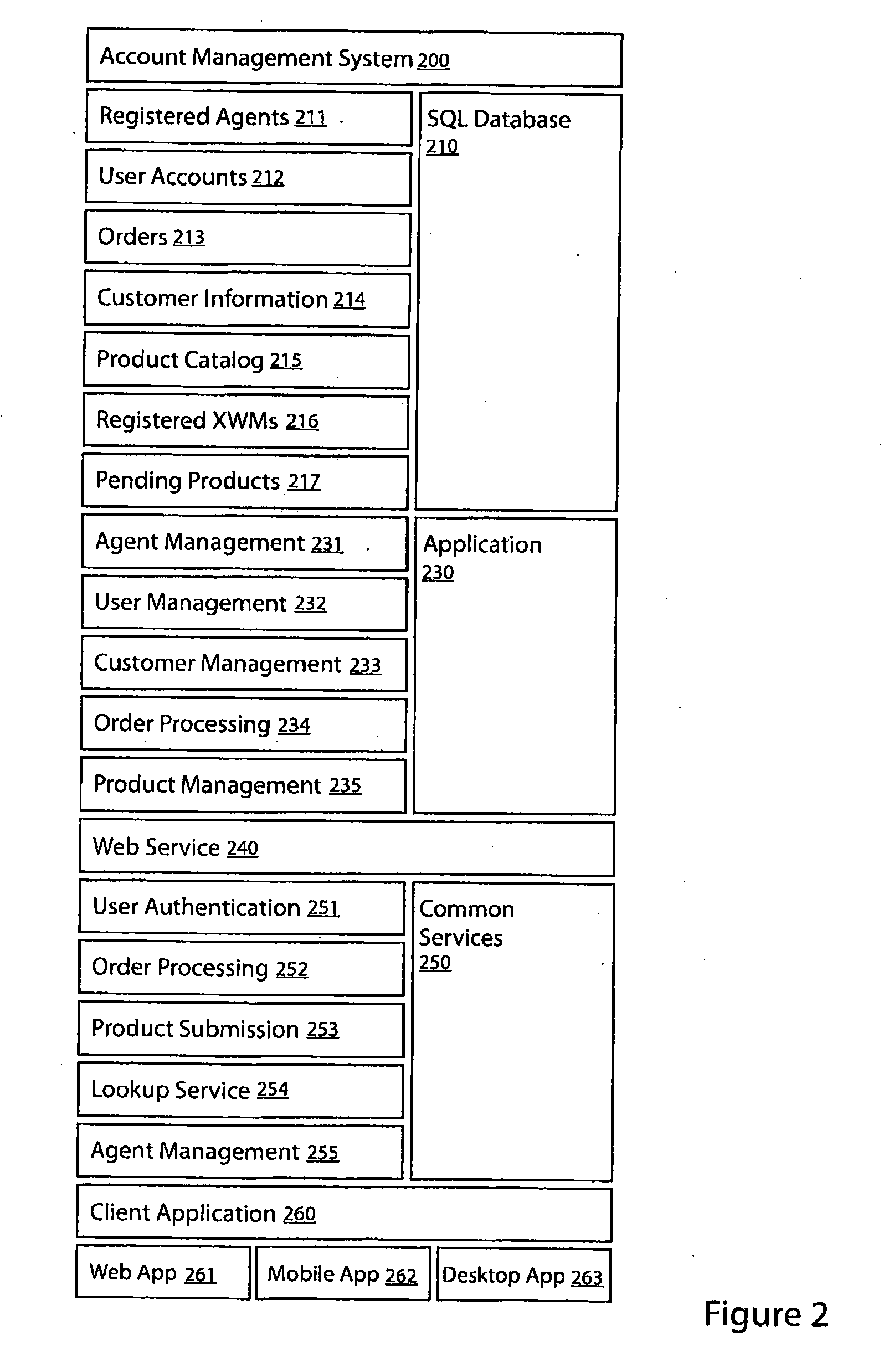Method, system and computer program for creating and editing a website
a computer program and website technology, applied in the field of websites, can solve the problems of many people establishing and managing a web presence, difficult to achieve, and many limitations in the technology, and achieve the effect of improving the user experience, and improving the user experien
- Summary
- Abstract
- Description
- Claims
- Application Information
AI Technical Summary
Benefits of technology
Problems solved by technology
Method used
Image
Examples
Embodiment Construction
[0131]A. Overview
[0132]The present invention is an extensible website manager (referred to herein as an “XWM”) that incorporates the advantages of a CMS with the convenience of a website builder to provide a system and method for creating a website in a true WYSIWYG environment. All editing takes place directly on the webpages using a concise, simple toolset.
[0133]At a high level, both the CMS and the XWM use layouts with “panels” in which “blocks” can be placed, and blocks are the main method for adding and managing content for webpages. The XWM is fundamentally different from a CMS, however, in the manner in which it utilizes blocks and properties. This core difference between block theories has widespread impact on the entire system and is mostly responsible for the capabilities of the XWM over competing products.
[0134]The XWM maintains tight control over the format in which blocks are created and stored, whereas a CMS allows the developer to define the format and structure of th...
PUM
 Login to View More
Login to View More Abstract
Description
Claims
Application Information
 Login to View More
Login to View More - R&D
- Intellectual Property
- Life Sciences
- Materials
- Tech Scout
- Unparalleled Data Quality
- Higher Quality Content
- 60% Fewer Hallucinations
Browse by: Latest US Patents, China's latest patents, Technical Efficacy Thesaurus, Application Domain, Technology Topic, Popular Technical Reports.
© 2025 PatSnap. All rights reserved.Legal|Privacy policy|Modern Slavery Act Transparency Statement|Sitemap|About US| Contact US: help@patsnap.com



